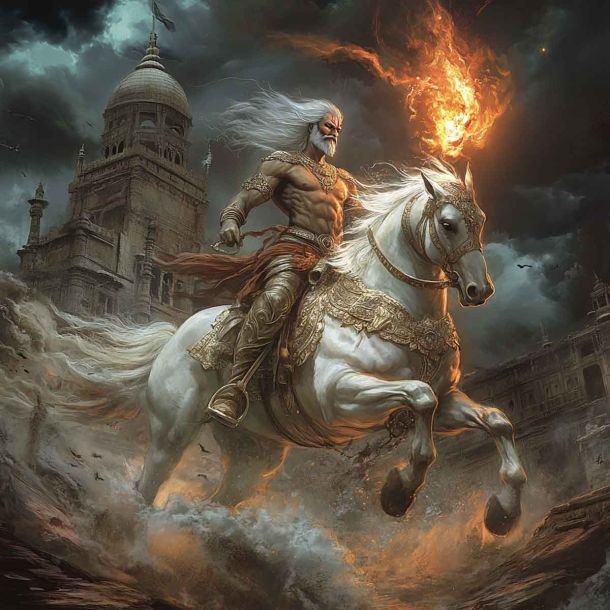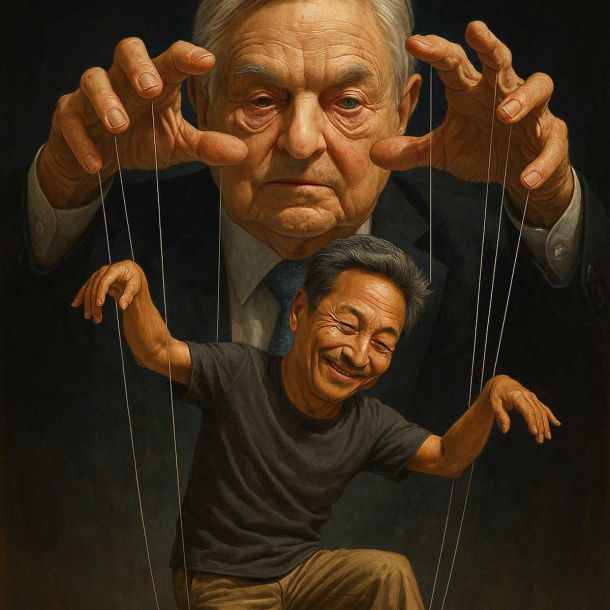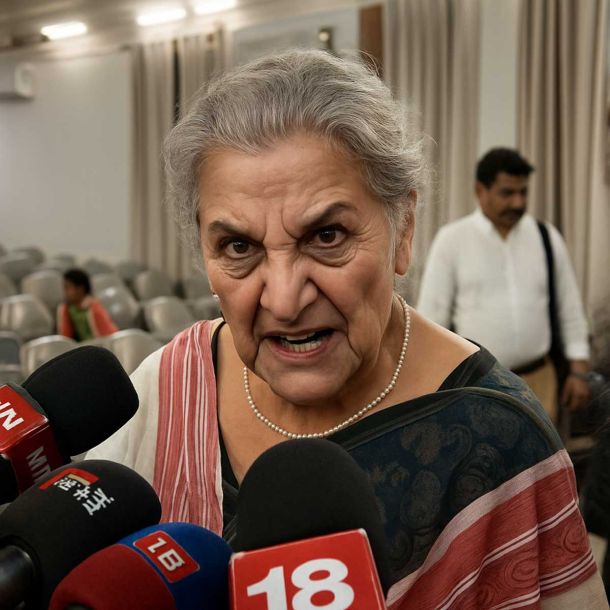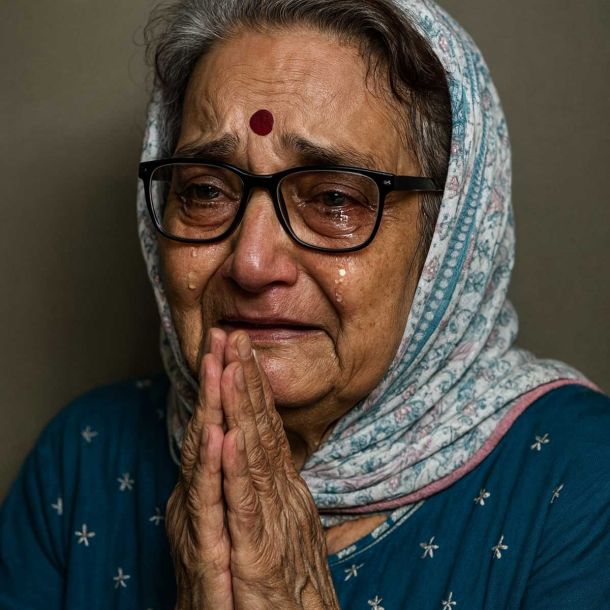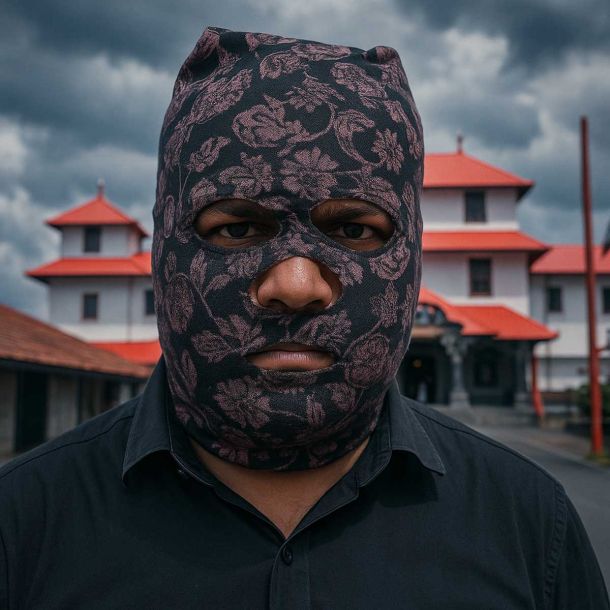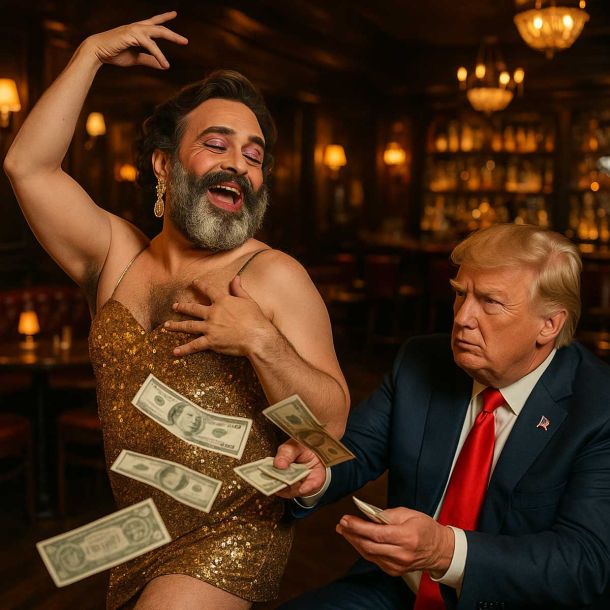More Coverage
Twitter Coverage
Satyaagrah
Written on
Satyaagrah
Written on
Satyaagrah
Written on
Satyaagrah
Written on
Satyaagrah
Written on
Join Satyaagrah Social Media
Kartar Singh Sarabha - The Freedom fighter who was Hanged at the age of 19 and inspired Bhagat Singh

It is difficult to identify the date or time from when revolutionary movements in India starting taking shape. In one way all historical phases in nations and societies have revolutionary moments. As and when radical changes, considered progressive, take place in a society, those phases are called revolutionary phases.
Thus, in Marxist tradition changes from Primitive Communism to class society and again from class society to Scientific Socialism towards Advanced Communism are considered revolutionary phases. From Slavery to Feudalism and from Feudalism to Capitalism are considered revolutionary changes within class society. From Capitalism to Socialism and finally towards Communism are considered further revolutionary phases of societies throughout the world. Lenin described Imperialism as ‘the highest stage of Capitalism’’!
It was after the massive revolt in 1857, derided as ‘Ghadar’ by British colonialists and regarded as ‘First war of Independence' by Indian historians, that after defeating Indian people in this war that British queen became ‘Queen of India's as well from November 1858. Revolts continued even after, but the use of term ‘Revolutionary movements’ began from 1897 revolts from Maharashtra. Chapekar Brothers, Wasdev Balwant Phadke like revolutionaries gave their life in this phase. This tradition flourished in Bengal during 1905 partition and revolutionaries like Khudi Ram Bose and many more became house hold name. Nationalist Congress leader Chittranjan Das became known for his empathy with revolutionaries youth, so was later his widow Mrs. Basanti Devi, who gave a stirring call to Indian youth after the brutal lathi charge and subsequent death of Lala Lajpat Rai in 1928. Anushilan Samiti and Yugantar - two groups became well known in Bengal for their revolutionary activities, out of which later day Hindustan Republican Association (HRA) emerged.
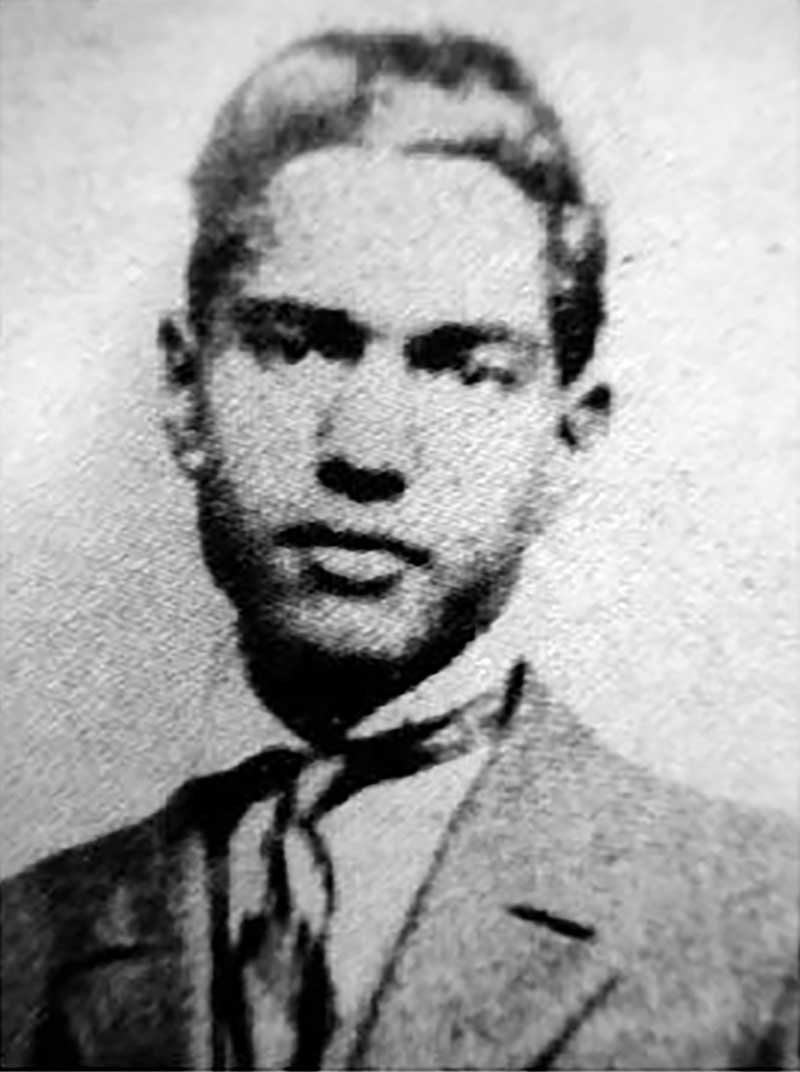 Kartar Singh Sarabha |
Beginning from 1897 till Ghadar Party was organised in USA, early revolutionaries had vague ideas about nation and country. Vande Matram was their song and Bharat Mata-Mother India was their symbol. The pictorial part was to show Mother India wearing Saree in chains of British colonialism and revolutionaries were to free her from chains.
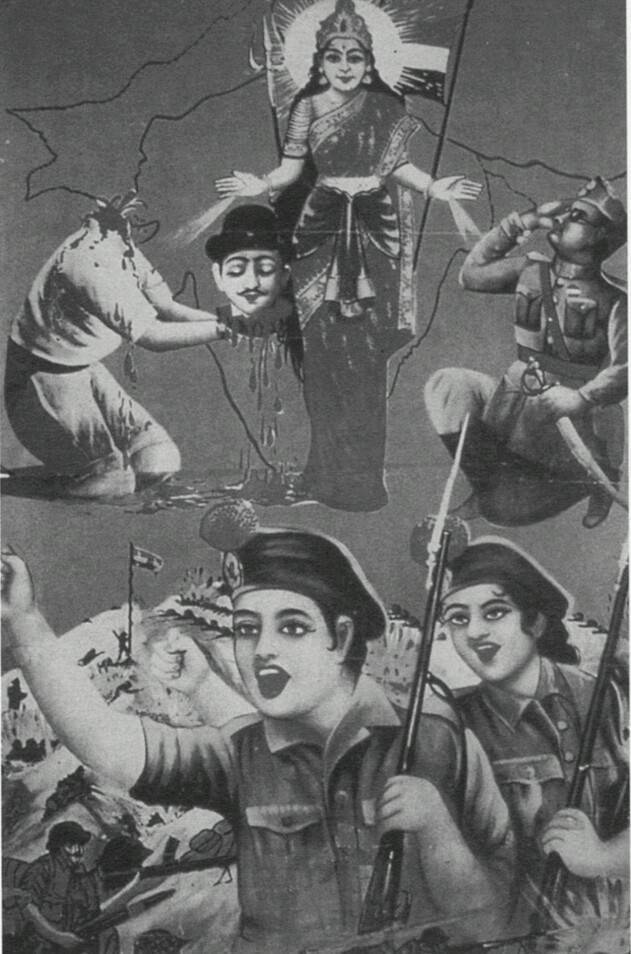 |
November 16, 2021, marks the 106th anniversary of Kartar Singh Sarabha’s martyrdom. He was one such glittering star of the Ghadar party which upheld the secular values as Hindus, Muslims and Sikhs joined it with equal passion against the imperial force. Here, are few important facts of his life which is nothing but an inspirational saga and is worthy to recall in contemporary conditions.
At the young age of 16 he joined the Indian freedom struggle overseas as a member of the Ghadar Party. He returned to India to give shape to the freedom movement the big way. He led rebellions in Punjab until he was caught by the British. He attained martyrdom at the young age of 19. He is Kartar Singh Sarabha.
Kartar Singh Sarabha was born on 24 May 1896 into a Sikh Jat family to Sahib Kaur and Mangal Singh in Ludhiana. He lost his father at a very young age and grew up under the care of his grandfather Badan Singh Grewal. Till Standard VIII, he studied in Ludhiana and then enrolled at a school in Orissa at his uncle’s place where he cleared his 10th.
For his higher studies his grandfather sent him to get enrolled in the University of California, Berkeley in 1912. Though he confirmed his family that he had enrolled in the university, few say that he didn’t study and instead worked as a mill worker.
An incident at the immigrations upon reaching San Francisco changed his life forever. He noticed that the Indians were subjected to humiliating questioning, while immigrants from other regions and countries were allowed in after bare minimum formalities. This, he was told, was because "Indians are slaves" and therefore, second-rate citizens.
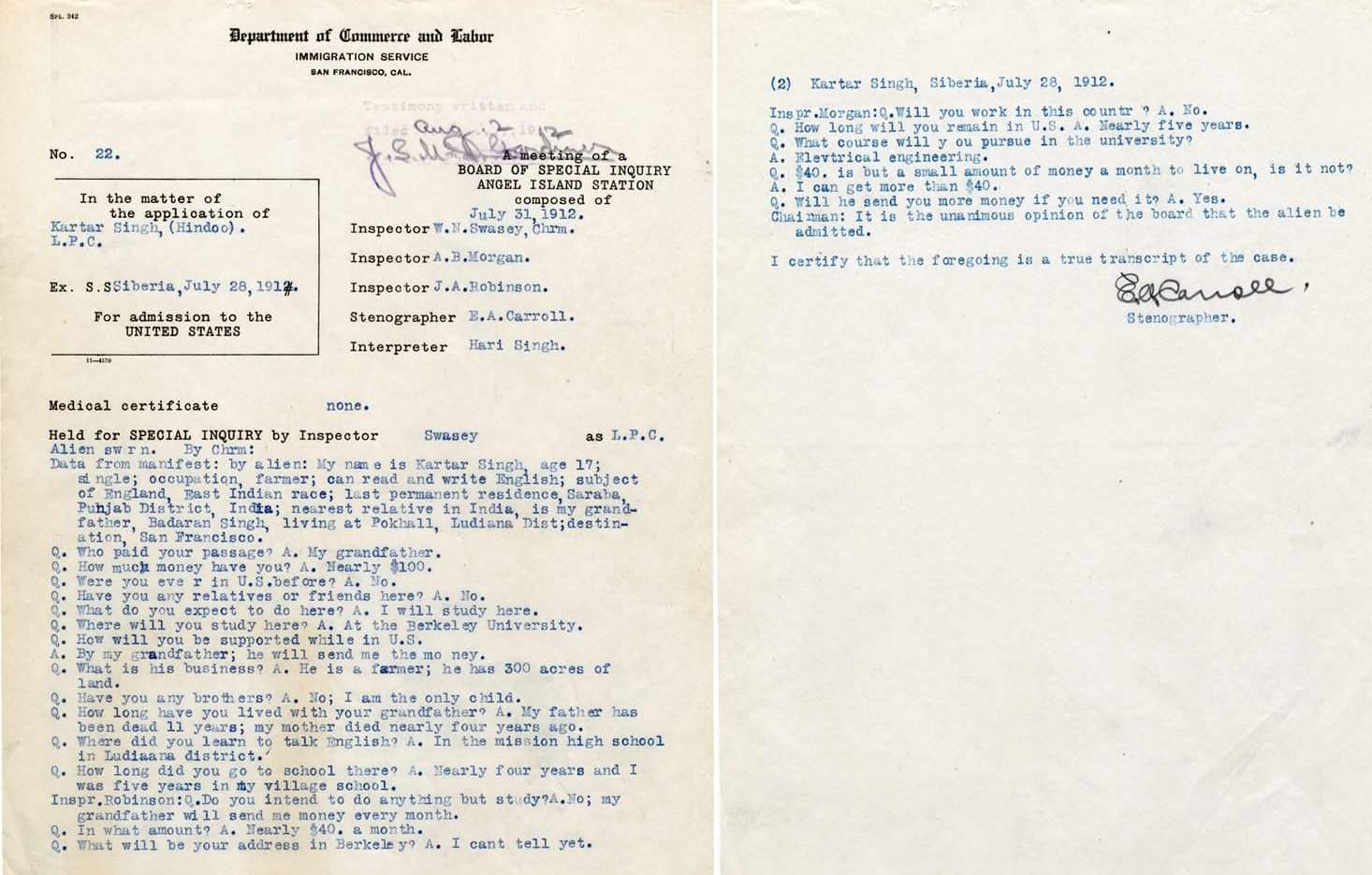 Questions that were part of a special inquiry of Kartar Singh Sarabha at the San Francisco Airport |
In 1912, after landing at the San Francisco Airport, the immigration authorities quarantined him for special questioning. On being questioned by the officer, he replied, “I have come here for studies.” The officer said, “Didn’t you find any place to study in India?” He answered, “I have come for higher studies and intend to take admission in the University of California for that purpose.”
“And if you are denied permission to land?” the officer asked. To this, Kartar Singh replied, “I would consider that a grave injustice. If hurdles are created in the path of students, the progress of the world will stop. Who knows the education here might empower me to accomplish some great deed for the good of the world. In case I am disallowed to disembark, won’t the world suffer due to the lack of that great deed?” Impressed with his answer, the officer allowed him to disembark.
However, his sensitive soul suffered deep wounds at each and every step after landing in the supposedly ‘free’ nation. He heard phrases like ‘damn Hindoo’ and ‘black coolie’ from white Americans. The lack of respect for his country disturbed him. The image of an enslaved, shackled, insulted, helpless, impotent India would often flash in front of his eyes.
This rankled young, proud Jat Sikh and he started questioning the existence of British rule in India. His association with Nalanda club of Indian students at Berkeley aroused his patriotic sentiments and he often got agitated about the treatment meted out to the Indian immigrants, especially manual workers, in the United States. Kartar Singh, himself worked as a fruit picker to support his education and observed that the Indian farm labour were often treated shabbily and discriminated against in terms of wages.
Meanwhile, Kartar Singh Sarabha met Indian students at Nalanda Club at Berkeley. Conversations with fellow Indians aroused his patriotic sentiments. During this time, he also met Sohan Singh Bhakna who was double his age, who inspired him to join the Ghadar Party. Bhakna was a Sikh peasant from Bhakna village in Amritsar district. Kartar Singh Sarabha immediately agreed.
And then started his robust training as a Ghadar member! He was all the more determined to free India from British rule. He learnt the art of using weapons including the use of gun and pistol from local Americans. He also learned how to make a bomb. Kartar Singh Sarabha also learnt how to fly an airplane.
On 12th April 1913, Indian workers in the Pacific Coast including Canada, USA that majorly comprised of Sikhs formed a group and called it the "Ghadar Party". Sohan Singh Bhakna was the key founder. Another founding member was Har Dyal. Kartar Singh stopped his university work, moved in with Lala Hardyal and became his helpmate in running the revolutionary newspaper Ghadar (revolt). He undertook the responsibility for printing of the Gurmukhi edition of the paper.
 |
He composed patriotic poetry for it and wrote articles. The aim of the Ghadar Party was to get rid of the slavery of the British by means of an armed struggle. On 1st November 1913, the Ghadar Party started printing a paper named Ghadar, which was published in Punjabi, Hindi, Urdu, Bengali, Gujarati and Pushto languages. Kartar Singh was quite heavily involved in the publishing of that paper. Its headquarters was at San Francisco.
This paper was sent to Indians living in all countries throughout the world. Its purpose was to unmask the atrocities being committed on Indians by the colonial British government.
Within a short time, the Ghadar Party became famous through The Ghadar. It drew Indians from all walks of life.
Ghadar Party started publishing a weekly paper called The Ghadar under the auspices of the Yugantar Ashram in San Francisco. This paper carried the caption on the masthead: "Angrezi Raj Ka Dushman". Kartar Singh Sarabha wrote in the first issue:
"Today there begins 'Ghadar' in foreign lands, but in our country's tongue, a war against the British Raj. What is our name? Ghadar. What is our work? Ghadar. Where will be the Revolution? In India. The time will soon come when rifles and blood will take the place of pens and ink." — Kartar Singh Sarabha
The Ghadar also declared:
"Wanted brave soldiers to stir up rebellion in India:
Pay - Death
Price - Martyrdom
Pension - Liberty
Field of battle - India".
Ghadar Party soon gained support from Indian expatriates from foreign lands worldwide. More freedom fighters from across the country joined the Ghadar Party to give shape to the movement the big way.
Other key members of the group were Rashbehari Bose, Har Dayal, Gulab Kaur and Bhai Parmanand. In this context, Sohan Singh Bhakna later said regarding the members of the Ghadar Party, "We were not Sikhs or Punjabis. Our religion was patriotism".
Kartar Singh Sarabha and the other leaders of the Ghadar Party decided to wage war against the British in India. With the start of World War I in 1914, the British became thoroughly engrossed in the war effort. Thinking it to be a good opportunity, the leaders of the Ghadar Party published the "Decision of Declaration of War" against the British in issue of 'The Ghadar' dated 5 August 1914. Thousands of copies of the paper were distributed among army cantonments, villages and cities.
Ghadar Party and other revolutionaries were of the view that the British are caught in a war, this is a good time to hit them and throw them out of the country. So they were calling on soldiers to revolt and fight the British. They had fixed a date for uprising.
Singh reached Calcutta via Colombo on board SS Salamin in October 1914: he accompanied two other Gadhar leaders, Satyen Sen and Vishnu Ganesh Pingle, along with a large number of Gadhar freedom fighters. With a letter of introduction from Jatin Mukherjee, the Jugantar leader, Singh and Pingle met Rash Behari Bose at Banaras to inform him that 20,000 more Gadhar members were expected very soon. A large number of leaders of the Ghadar Party were arrested by the government at the ports.
In spite of these arrests, a meeting was held by members of the Ghadar Party at Ladhouwal near Ludhiana in which it was decided to commit robberies in the houses of the rich to meet requirements of finance for armed action. Two Ghadris, Waryam Singh and Bhai Ram Rakha, were killed in a bomb blast in one such raid.
Sarabha at a very young age had analysed that those who are petitioning the British and recruiting soldiers for them, they only want a greater share in the loot of the country. If they come into power somehow, they will carry on the same colonial rule, plunder, pillage and rape of India. Sarabha’s words have proven to be prophetic. Last seventy+ years have proven it to the letter of Sarabha’s prophecy.
Although young in age, Sarabha was respected by older leaders such as Baba Jawala Singh, Baba Sohan Singh Bhakna and others. They had given him a nick name Baba Gernal , as he was a very good shooter and he had learnt to fly airplane. His insight, instinct and spirit were thoroughly revolutionary. The British claimed that he was the most dangerous rebel during his trial.
After the arrival of Rash Behari Bose at Amritsar on 25 January 1915, it was decided in a meeting on 12 February that the uprising should be started on 21 February. It was planned that after capturing the cantonments of Mian Mir and Ferozepur, mutiny was to be engineered near Ambala and Delhi.
Meanwhile, Sarabha and other Ghadar members led small rebellions in Punjab. They started visiting the villages and motivated the people to join the fight against the British.
It is but a fact that during Muslim and British rule, many Indians themselves were traitors. Had these traitors not existed there would have been no Muslim or British rule. It is because of these traitors that Muslims and British ruled India for a long time. It was because of a traitor within the Ghadar Party that the British came to know beforehand about the rebellion plans of the Ghadar Party. Accordingly, the British arrested many freedom fighters including Kartar Singh Sarabha in 1915. Hundreds of Ghadar members were arrested at the ports by the British.
Betryal
Kirpal Singh, a police informer in the ranks of the Ghadar Party, had a large number of members arrested on 19 February and informed the government of the planned revolt. The government disarmed the native soldiers and the revolt failed.
After the failure of the revolution, the members who had escaped arrest decided to leave India. Kartar Singh, Harnam Singh Tundilat, Jagat Singh, and others were asked to go to Afghanistan and made a move towards that area. But Kartar's conscience did not permit him to run away when his comrades had been held. On 2nd March 1915, he came back with two friends and went over to Chak No. 5 in Sargodha where there was a military stud and started propagating rebellion amongst the army men. Risaldar Ganda Singh had Kartar Singh, Harnam Singh Tundilat, and Jagat Singh arrested from Chak No. 5, district Lyallpur.
His grandfather came to meet him in Lahore jail. "Kartar Singh," he said, "We are not even sure that the country will benefit from your death. Why are you wasting your life?" In reply, Kartar Singh reminded his grandfather of certain relatives who died of Cholera, plague or other diseases. "So, would you want your grandson to die of an ailment instead? Is this death not a thousand times better than that?” He quizzed, rendering the old man speechless.
The failed Ghadar conspiracy was also termed the First Lahore Conspiracy Case as the trials were held in Lahore. While many members left India to evade arrest, many were arrested. 291 freedom fighters, all members of the Ghadar Party, were convicted as conspirators. 42 of them were executed and 114 got life sentences. While 93 freedom fighters got varying terms of imprisonment, 42 defendants in the trial were acquitted. Kartar Singh Sarabha was sentenced to death by hanging on 13th September 1915 in the same trial. He was hanged in the Central Jail of Lahore on 16 November 1915. He was then aged only 19 years old.
Inspiration to several revolutionary and other freedom fighters, including Bhagat Singh, who referred to him as his "Guru", Kartar Singh had refused any counsel for himself during the trial of the case.
All of these accused in the Conspiracy Case, for India's freedom who had worked long years and suffered privations and sacrificed everything that man runs after, were executed in the Lahore Central Jail on November 17, 1915. In the Court room as also standing before the gallows the condemned men refused to accept their endeavour to be termed a 'conspiracy'.
They contended that it was an open challenge to the foreigners who charged the patriots, those who were sacrificing everything for the freedom of their Motherland with the offence of sedition, of waging war against the King.
Kartar Singh was not at all sorry for what he had done; rather he felt proud for enjoying the privilege of throwing out the challenge at the face of a lot of usurpers. He was really sorry over the outcome of their efforts. He averred that every slave had a right to revolt and it could never be a crime to rise in defence of the primary rights of the sons of the very soil. When he was being tried on the charge of sedition, he took the entire blame upon himself. The Judge was astounded to see such a young boy behaving in such a non-chalant manner. In view of his tender age he advised the young revolutionary to modify his statement, but the result was the very opposite of what was desired by him. When asked to appeal he retorted,
"Why should I? If I had more lives than one, it would have been a great honour to me to sacrifice each of them for my country."
The judge pronounced him "the most dangerous of all rebels" and observed that since he is very proud of the crimes committed by him, he does not deserve any mercy and should be sentenced to death.
He was later sentenced to death. During the period of his detention in Lahore Central jail, Kartar Singh managed to get hold of some instruments. With their help he wanted to cut the iron-bars of his window and escape in company with some other revolutionaries. The authorities who learnt about his designs well in time and seized the instruments from underneath an earthen pitcher in his room, But the plan was rendered abortive by the jail authorities. At the time of his execution Kartar Singh was hardly nineteen years old. But such was his courage that in the course of his detention he gained 14 pounds of fresh weight.
On 16 November 1915, Kartar Singh Sarabha walked to the gallows with a smile on his lips and twinkle in the eyes and singing patriotic songs he had composed.
सेवा देश दी जिंदड़ीए बड़ी ओखी,
गल्लां करनियां ढेर सुखल्लियां ने।
जिन्नां देश सेवा विच पैर पाइया
उन्नां लख मुसीबतां झल्लियां ने।
Meaning
Serving one’s country is very difficult
It is so easy to talk
Anyone who walked on that path
Must endure millions of calamities
He soon became the symbol of martyrdom and many were influenced from his bravery and sacrifice. A Punjabi novelist Nanak Singh wrote a novel titled “Ikk Miyan Do Talwaran” based on his life. India will always cherish the memory of its hero, Shaheed Kartar Singh Sarabha.
 |
Kartar Singh Sarabha could have fled abroad to evade arrest. But he did not. He embraced death bravely. He soon became the symbol of martyrdom and many were influenced from his bravery and sacrifice. Do you know Bhagat Singh was inspired by Sarabha’s freedom struggle and regarded him as his Guru? "On Bhagat Singh’s arrest, a photo of Sarabha was recovered from him. He always carried this photo in his pocket. Very often, Bhagat Singh would show me that photograph and say, 'Dear mother, this is my hero, friend and companion.' " - Bhagat Singh's mother
 |
Bhagat Singh very often use to sing this poem of Kartar Singh:
यहीं पाओगे महशर में जबां मेरी बयाँ मेरा,
मैं बन्दा हिन्द वालों का हूँ है हिन्दोस्तां मेरा।
मैं हिन्दी ठेठ हिन्दी जात हिन्दी नाम हिन्दी है,
यही मजहब यही फिरका यही है खानदां मेरा।
मैं इस उजड़े हुए भारत का यक मामूली जर्रा हूँ,
यही बस इक पता मेरा यही नामो-निशाँ मेरा।
मैं उठते-बैठते तेरे कदम लूँ चूम ऐ भारत!
कहाँ किस्मत मेरी ऐसी नसीबा ये कहाँ मेरा।
तेरी खिदमत में अय भारत! ये सर जाये ये जाँ जाये,
तो समझूँगा कि मरना है हयाते-जादवां मेरा।
Salute to Kartar Singh Sarabha and the other brave Ghadar warriors who sacrificed their lives for the freedom of the motherland. Jai Hind!
References:
twocircles.net
en.wikipedia.org
pib.gov.in
newsd.in
Saffron Swords: Centuries of Indic Resistance to Invaders - Manoshi Sinha Rawal, Yogaditya Singh Rawal
 Support Us
Support Us
Satyagraha was born from the heart of our land, with an undying aim to unveil the true essence of Bharat. It seeks to illuminate the hidden tales of our valiant freedom fighters and the rich chronicles that haven't yet sung their complete melody in the mainstream.
While platforms like NDTV and 'The Wire' effortlessly garner funds under the banner of safeguarding democracy, we at Satyagraha walk a different path. Our strength and resonance come from you. In this journey to weave a stronger Bharat, every little contribution amplifies our voice. Let's come together, contribute as you can, and champion the true spirit of our nation.
 |  |  |
| ICICI Bank of Satyaagrah | Razorpay Bank of Satyaagrah | PayPal Bank of Satyaagrah - For International Payments |
If all above doesn't work, then try the LINK below:
Please share the article on other platforms
DISCLAIMER: The author is solely responsible for the views expressed in this article. The author carries the responsibility for citing and/or licensing of images utilized within the text. The website also frequently uses non-commercial images for representational purposes only in line with the article. We are not responsible for the authenticity of such images. If some images have a copyright issue, we request the person/entity to contact us at This email address is being protected from spambots. You need JavaScript enabled to view it. and we will take the necessary actions to resolve the issue.
Related Articles
- Our first true war of independence lie forgotten within the fog of time and tomes of propaganda: Sanyasi Rebellion, when "renouncers of the material world" lead peasants in revolt against British and fundamentalist islamic clans
- Tirot Singh: An Unsung Hero of the Khasi Tribe who destroyed British with his skill at Guerrilla Warfare
- 16 year old freedom fighter Shivdevi Tomar, who killed 17 Britishers and wounded many
- Unsung Heroine Pritilata Waddedar, Who Shook The British Raj at the age of 21
- 21-yr-old girl Bina Das shot Bengal Governor in her convocation programme at Calcutta University, got Padma Shri but died in penury
- Freedom struggle of Gurjars against Britishers at Koonja in 1824: 100s of Gurjars Martyred and 100s Hung in Single Tree
- A Great man Beyond Criticism - Martyrdom of Shaheed Bhagat Singh (Some Hidden Facts)
- An Artisan Heritage Crafts Village: Indigenous Sustainability of Raghurajpur
- अथ रामचरितमानस प्रकाशन कथा: गीता प्रेस, गोरखपुर ने 1938 से रामचरितमानस का प्रकाशन शुरू किया
- Rana Sanga, the symbol of bravery who defeated Sultan Ibrahim Lodhi and fought Muslim Terrorists for Hindu Existence
- How Chhatrapati Shivaji Maharaj was establishing Hindu Samrajya by concluding centuries of Islamic oppression - Historian GB Mehandale destroys secular propaganda against Hindu Samrajya Divas
- Dangers of losing our identity: Guru Tegh Bahadur forgotten and Aurangzeb being glorified
- Vinayak Damodar Savarkar – A Misunderstood Legacy
- Godse's speech and analysis of fanaticism of Gandhi: Hindus should never be angry against Muslims
- Chronicles of Valour- The Battle of Haldighati

